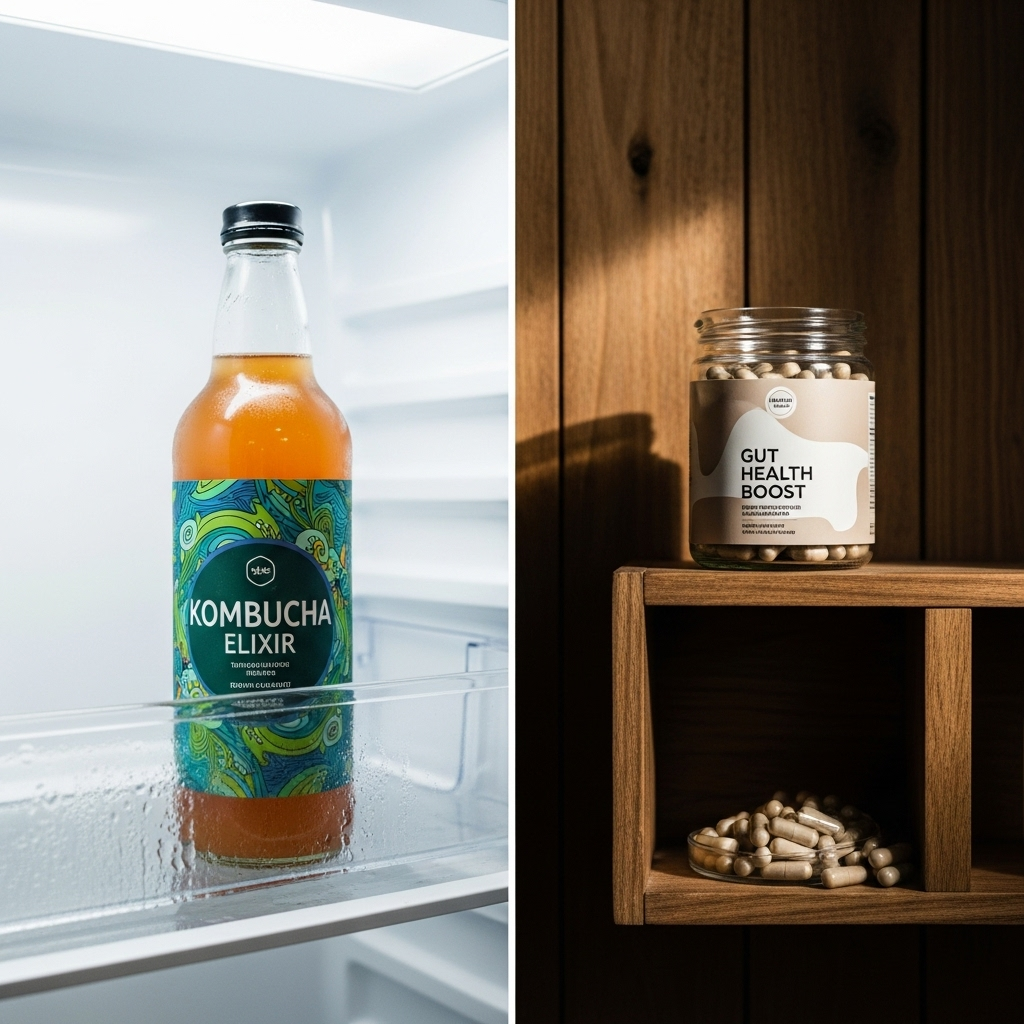Refrigerated vs Shelf-Stable Cat Probiotics

Choosing a probiotic for your cat can feel confusing: there are refrigerated jars in the fridge aisle and sealed bottles on the shelf. Both types aim to deliver beneficial microbes to the gut, but they differ in how the products are formulated, stored, and guaranteed to remain alive. This guide explains the practical differences between refrigerated and shelf-stable cat probiotics, how to pick one that fits your cat’s needs, how to store and give them safely, and when to check with your veterinarian.
How probiotics work and why viability matters
Probiotics are live microorganisms—usually bacteria or yeast—that may help balance intestinal flora, support digestion, reduce some types of diarrhea, and help the immune system. For a probiotic to be effective it generally needs to be alive when it reaches the intestine. That makes “viability” (the number of living organisms) a key consideration.
Common probiotic strains for cats
- Lactobacillus species (L. acidophilus, L. rhamnosus)
- Bifidobacterium species
- Enterococcus faecium (pet-specific strains)
- Bacillus species (spore-formers like B. subtilis)
- Saccharomyces boulardii (a yeast probiotic)
Refrigerated probiotics: what they offer
Refrigerated probiotics typically contain strains that are sensitive to heat and humidity (like Lactobacillus and Bifidobacterium). To preserve viability manufacturers recommend cold storage from production to your home—this is called the “cold chain.”
Benefits of refrigerated products
- Often contain traditional gut-friendly strains with research supporting use in companion animals.
- May deliver higher counts of live organisms per dose when stored correctly.
- Some brands guarantee CFUs (colony-forming units) through expiration if refrigerated.
Considerations for refrigerated products
- Require reliable refrigeration during shipping and storage; heat exposure can reduce potency.
- May be less convenient for travel or if you don’t have stable refrigeration.
- Some products can be more expensive due to cold-chain handling.
Shelf-stable probiotics: what they offer
Shelf-stable probiotics are formulated to remain viable at room temperature. They often use hardy strains (spore-formers like Bacillus) or protective technologies (microencapsulation, drying methods) that tolerate warmth and humidity for the product’s intended shelf life.
Benefits of shelf-stable products
- More convenient: store on a pantry shelf, easier to pack for trips or send with a pet sitter.
- Often more forgiving if left at room temperature for short periods.
- Typically less expensive to ship and store.
Considerations for shelf-stable products
- Different strains behave differently in the gut—spore-formers and yeast may act differently than Lactobacillus/Bifidobacterium.
- Some shelf-stable formulas compensate for lower survivability by listing higher CFU counts at manufacture; check if CFUs are guaranteed through expiration.
Practical differences: choosing what’s right for your cat
The best choice depends on your cat’s health, lifestyle, and how you plan to store and use the supplement.
When refrigerated may be better
- Your cat has ongoing GI issues and your veterinarian recommends specific Lactobacillus/Bifidobacterium strains.
- You can reliably keep the product cold and follow label instructions.
When shelf-stable may be better
- You travel often, board your cat, or have inconsistent refrigeration.
- You want a simple maintenance probiotic or a product containing Bacillus or Saccharomyces boulardii.
Storage, handling, and giving probiotics
Follow these practical tips to maintain potency:
- Check the label: does it specify refrigerated storage or say “store in a cool, dry place”?
- Look for “CFU guaranteed through expiration” and an expiration/use-by date.
- Keep refrigerated products cold from purchase—bring a cooler if shopping in hot weather.
- Store shelf-stable products in a cool, dry place away from heat and sunlight.
- Give probiotics at the dose recommended on the label or by your veterinarian.
- If your cat is on antibiotics, space probiotics a few hours apart; Saccharomyces boulardii (a yeast) can be given during many antibiotic courses because it is not a bacterium.
Safety and side effects
Most healthy cats tolerate probiotics well. Mild and temporary side effects can include gas or soft stools as the gut adjusts. In rare cases—especially in severely immunocompromised animals—there’s a theoretical risk of infection from live microbes. Always consult your veterinarian before starting probiotics if your cat is very young, elderly, severely ill, on chemotherapy, or has a weakened immune system.
Pros and Cons at a glance
| Type | Pros | Cons |
|---|---|---|
| Refrigerated | May contain traditional strains with proven benefits; higher live counts if cold chain maintained; often guaranteed CFU if refrigerated | Needs cold storage and careful shipping; less convenient for travel; can be costlier |
| Shelf-stable | Convenient, stable at room temperature, good for travel; often more durable during storage | May use different strains (spore-formers/yeasts) with different effects; check CFU guarantees |
How to evaluate a product label
- Strain specificity: look for genus, species, and strain IDs (e.g., Enterococcus faecium SF68).
- CFU amount and whether it’s guaranteed through expiration.
- Storage instructions (refrigerate or store at room temperature).
- Manufacturing date or expiration date and batch information.
- Whether the product is formulated for cats (some pet products use pet-specific strains).
FAQ
1. Can I switch between refrigerated and shelf-stable probiotics?
Yes, you can switch, but do it gradually and watch your cat’s stool and appetite. Different strains may act differently; ask your veterinarian if the switch is for a health problem.
2. Do probiotics work immediately?
Some cats may show improvement in days for mild digestive upset; other conditions may take several weeks. Consistent daily use as directed is important.
3. Are human probiotics safe for cats?
Some human probiotics contain strains safe for pets, but many are not tested in cats. It’s safer to use products labeled for cats or approved by your veterinarian.
4. What if my cat vomits or has diarrhea after starting a probiotic?
Mild GI changes can occur initially. If symptoms are severe, persistent, or your cat seems unwell, stop the product and consult your veterinarian.
Key Takeaways
- Both refrigerated and shelf-stable probiotics can benefit cats; the right choice depends on strain, storage, and your cat’s health needs.
- Refrigerated products often contain heat-sensitive strains and may deliver higher live counts if you maintain the cold chain.
- Shelf-stable products use hardy strains or protective methods and are more convenient for travel and variable storage conditions.
- Always check labels for strain, CFU guarantees, and storage instructions, and consult your veterinarian for kittens, sick or immunocompromised cats.
- Monitor your cat after starting a probiotic and report any concerning symptoms to your veterinarian.
Disclaimer: This article provides general information and is not a substitute for veterinary care. For personalized advice, dosing, or if your cat has ongoing or severe health problems, consult your veterinarian before starting any probiotic.

Leave a Reply